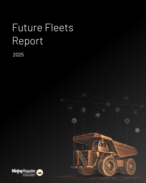In the middle of the silly season, there is nothing more comforting than seeing a fat dividend cheque in the bank to pay for the Christmas presents.
But the market’s obsession with cash back – a hangover from the management excesses and stuff-ups during the boom years – has certainly made it tough for miners with a hint of entrepreneurial spirit in their blood.
As MD discussed last week, investors are in no mood to applaud Twiggy-like growth aspirations, or even modest expansion agendas.
Rather, global miner Rio Tinto proudly trumpets its bean-counting prowess by relegating “growth” to third position on its “capital allocation priorities”, while small miners are accused of having an appalling record on dividend payments.
MD reckons the pendulum has swung too far: towards divvying out spare cash and away from finding and developing new mines.
Further evidence of this extreme fashion craze came via a telephone call from a mid-cap CEO who told MD of the clandestine management tactics needed to counteract the new stinginess.
In the spirit of subterfuge, MD won’t identify the person or his company as it would likely trigger unfortunate consequences for said CEO.
But he can assure readers the ASX-listed company is real, as is its mine.
After a rocky beginning to operations, the company is enjoying positive cash flow, enabling it to start paying down debt.
For shareholders, however, “growth” remains a dirty word as they politely inquire when a dividend cheque will be in the mail.
The CEO is fine with these sentiments, given that many punters are still underwater on their initial investment.
But he believes the miner is between a rock and a hard place if it slavishly follows the dictates of the market.
“In 12 or 18 months we’ll likely have good profitability and our debt levels will be down significantly,” he told MD.
“Then shareholders will say: ‘Great job but you’ve only got one project – what are you doing about it?’
“The problem being, of course, that if you start looking in a year from now, every bastard will be looking – the market will probably have improved a bit and assets will be higher priced.”
The CEO said the best tactic for managers is to be a tad underhanded: avoid the “G” word totally and surreptitiously put out the growth feelers.
“We are working behind the scenes on what might be the best growth options in the next 12-18 months but shareholders don’t want to hear a thing about it,” he said.
“Don’t be public about it, because it will impact the share price negatively.”
Like a Catch 22-style satire, there may be comical complications if a CEO dares to suggest it may be a good idea to grow the business.
“You speak positively or optimistically about the future of the company and you can be caned for it – it’s quite funny,” he said.
Can you see the irony here?
Directors are paid to build a business but, in this mad universe, shrinking the asset base is okay as long as those dividend cheques keep flowing.
MD is concerned about the long-term implications of this cash craze.
Turning miners into annuity-style cash machines is great for short-term shareholder comfort but will eventually impoverish them when the tide turns.
By definition, an orebody is a diminishing resource that has to be duplicated if a miner is going to stay in business.
It is all very well for the owners of massive iron ore reserves – Rio Tinto, BHP Billiton and Fortescue Metals Group – to de-prioritise growth in the quest for shareholder value but not particularly sensible for small gold and base metal outfits digging into a four-year mine life.
It is fascinating to watch the likes of FMG playing the subterfuge game in the age of austerity.
Since its debt scare a year ago, Fortescue has been at pains to distance itself from the big-spending, full-throttle growth plans of the Forrest era.
Just last week Fortescue CFO Stephen Pearce told the Macquarie Global Metals and Mining conference that FMG was fully focused on delivering 155 million tonnes per annum consistently and was not thinking beyond that point until its debt reduced to targeted levels.
But apparently Pearce mentioned in passing to New York investors that FMG had low cost options to move to 175-180Mtpa by building more bridges and passing loops for its Pilbara rail system.
Growth is still a dirty word but FMG is clearly laying the groundwork for when the pendulum starts swinging the other way.
























